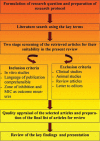Herbal extracts in oral health care - A review of the current scenario and its future needs
- PMID: 26392704
- PMCID: PMC4557240
- DOI: 10.4103/0973-7847.162101
Herbal extracts in oral health care - A review of the current scenario and its future needs
Abstract
Background: Oral diseases are among the major public health problems and the commonest of chronic diseases that affect mankind. The application of natural products for the control of oral diseases is considered as an interesting alternative to synthetic antimicrobials due to their lower negative impact, and for the effort to overcome primary or secondary resistance to the drug during therapy.
Objective: To review the current evidence on the antimicrobial efficacy of 10 plant extracts on dental caries and plaque microorganisms.
Materials and methods: A comprehensive literature search was made by one of the authors for 2 months in PubMed, PubMed Central, MEDLINE, LILACS/BBO, Cochrane database of systematic reviews, SCIENCE DIRECT, and Google scholar databases. The results from the relevant published literatures are discussed.
Summary and conclusion: The extracts of Azadirachta Indica, Ocimum sanctum, Murraya koenigii L., Acacia nilotica, Eucalyptus camaldulensis, Hibiscus sabdariffa, Mangifera indica, Psidium guajava, Rosa indica, and Aloe barbadensis Miller have all been found to inhibit certain dental caries and periodontal pathogens. The current evidence is on individual plant extracts against bacteria involved in either caries or periodontitis. "Herbal shotgun" or "synergistic multitarget effects" are the terms used for the strategy of combining different extracts. The research assessing the antimicrobial efficacy of a combination of these plant extracts against dental caries and periodontal pathogens is the need of the hour, and such research will aid in the development of a novel, innovative method that can simultaneously inhibit two of the most common dental diseases of mankind, besides slowing the development of drug resistance.
Keywords: Antimicrobial efficacy; Lactobacillus acidophilus; Streptococcus mutans; dental caries; herbal extracts; periodontitis.
Conflict of interest statement
Figures
References
-
- Petersen PE. The World Oral Health Report 2003: Continuous improvement of oral health in the 21st century- -the approach of the WHO Global Oral Health Programme. Community Dent Oral Epidemiol. 2003;31(Suppl 1):3–23. - PubMed
-
- Manjunath BC, Praveen K, Chandrashekar BR, Rani RM, Bhalla A. Peridontal infections: A risk factor for various systemic diseases. Natl Med J India. 2011;24:214–9. - PubMed
-
- Prashant GM, Chandu GN, Murulikrishna KS, Shafiulla MD. The effect of mango and neem extract on four organisms causing dental caries: Streptococcus mutans, streptococcus salivavius, streptococcus mitis, and streptococcus sanguis: An in vitro study. Indian J Dent Res. 2007;18:148–51. - PubMed
-
- Agarwal P, Nagesh L, Muralikrishnan Evaluation of the antimicrobial activity of various concentrations of Tulsi (Ocimum sanctum) extract against Streptococcus mutans: An in vitro study. Indian J Dent Res. 2010;21:357–9. - PubMed
Publication types
LinkOut - more resources
Full Text Sources
Other Literature Sources

